You think this is just another year in your life? This year has been given to you – it’s the gift you have been living all year. It has given you a unique opportunity to cultivate peace in your relationships and in your world. What did you do with this gift? … I have been asking myself these questions as I’ve been pondering the closing of 2018 and opening to the seeds of 2019.
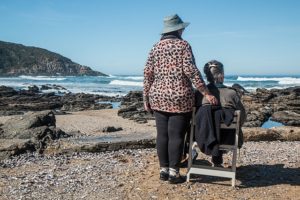 This past fall, I have supported others in their grief and losses and have also experienced my own. Facing the death of loved ones is a certainty, a reality of life from which we cannot be spared. In fact, every fall and winter season, we are given the opportunity to prepare ourselves for this experience of death and letting go. The leaves fall off the trees. Plants go dormant or die. Wildlife patterns shift with migrations. Temperatures drop and people move indoors, a form of preparing for the darkening and wintry days.
This past fall, I have supported others in their grief and losses and have also experienced my own. Facing the death of loved ones is a certainty, a reality of life from which we cannot be spared. In fact, every fall and winter season, we are given the opportunity to prepare ourselves for this experience of death and letting go. The leaves fall off the trees. Plants go dormant or die. Wildlife patterns shift with migrations. Temperatures drop and people move indoors, a form of preparing for the darkening and wintry days.
Nature teaches us to let go. To surrender. To let ourselves die in some manner. We often convince ourselves we are outside of Nature – that we don’t need to follow its laws, its flow, the changes it ceaselessly undergoes. But we do.
Each year, we enter this season of dying and death whether we understand this principle and activity or not. We try to skip over it and go to the birth, to Christmas and its pageantry, to the holidays, to spring without ever opening to and surrendering to the death that calls us. However, the order is clear. Birth and life and death cannot be separated from each other.
Now what is the grace in this? Where is the grace in death? How can death be sacred, holy even, when it requires that we let go of those we love and dreams we cherish? I’ve lived with this question since I’ve been 10 when my father was killed, over 40 years ago.
 The grace I have experienced has gifted me with the deep inner knowing that as Father Thomas Keating says, ‘in the death is the resurrection’. And Leonard Cohen sang ‘there is a crack in everything, that is how the light gets in’. In the grace of the Universe, death is the birth to new life. It is the path of transformation. The water, the fire, the air/breath, all return to the Source to be utilized in all of creation’s pure spirit.
The grace I have experienced has gifted me with the deep inner knowing that as Father Thomas Keating says, ‘in the death is the resurrection’. And Leonard Cohen sang ‘there is a crack in everything, that is how the light gets in’. In the grace of the Universe, death is the birth to new life. It is the path of transformation. The water, the fire, the air/breath, all return to the Source to be utilized in all of creation’s pure spirit.
As I have mentioned above, this fall has presented numerous deaths around me. I am also have dying conversations with others. I have also realized there is a dying happening within me. There are moments when fear comes knocking. Yet, when I deeply enter into my heart and open to the love between the heart-spirit, I realize that love transcends all death, and I am pulled into a sublime joy and peace words cannot convey.
When fear knocks, I remind myself to go deep within where the light is. As Richard Rohr writes: “What’s dying is not the deepest self, but our dependence and over-identification with the mental ego and its projects, and our cultural conditioning and over-identification with it, including our roles in life.”
The gift of grace in this dying is that already I can glimpse the joy of becoming fully alive. Some might say that I cannot prove that life exists beyond death. And they are right. What I do know from my own heart’s experience is the joy of resurrection/new life through the purity of love, spirit to spirit, a profound mystery to experience through the doorway of death. Whether it be my father’s spirit, my animal companions, my friends, my ancestors, Usui Sensei, their love and kindness, their compassion and guiding presence calms my spirit, restores hope and purpose along my journey, and grounds me in the life I have here and now, fully and completely. And so, love and hope become a healing balm to grief.
As Father Keating says, one aspect of creation is that, once you have been born into this world, you never die because, as the Hindu religions teach, each of us possesses deep within us an inalienable spark of divine love. [The Song of Songs says that love is stronger than death (8:6).] That spark is the same energy that created the Big Bang.
Shortly, Winter Solstice, the longest day of the year will be upon us. This day is a ceremony of letting go and surrendering to the death of what is now done and a time of going within to connect with the divine light deep within. It is a ceremony of the death of a mental ego projection and conditioning if we surrender to it. And it is a ceremony of planting a new seed, having trust and confidence that new life, a fresh and vital life will be resurrected as the days of light grow longer.
I believe we desire and yearn for ceremony, for the seasonal rituals, observances, and sacraments that bless us with vitality, with meaning for our humanity, with deep mystical moments that unite us with the cosmic presence and beingness of love and peace beyond our capacity to fully grasp it all. It is simply something we open to, surrender to and say ‘yes’ to. I am saying ‘yes’ to this death (yes, it has had its challenges!) and I will plant a new seed of peace for 2019.
I have been shown again this fall, several times, that the freedom and joy in death is not to be feared but to be celebrated, inspired by the love and compassion so profound that it powerfully can hold us in our grief, in the journey of acceptance of what is now forever transformed to new life.
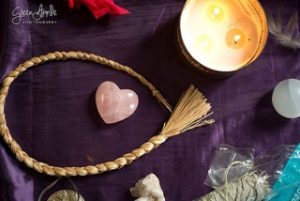 This year of my life I have lived in community with all of you. You each connect me to my truest self, the place where I can drink from my holy peace. And so I invite you to this year’s Peace Circle: Planting a New Seed of Peace on December 19th. More details are available on my website.
This year of my life I have lived in community with all of you. You each connect me to my truest self, the place where I can drink from my holy peace. And so I invite you to this year’s Peace Circle: Planting a New Seed of Peace on December 19th. More details are available on my website.
For those of you who wish to join me in gratitude, in hope, in confidence that we can let die what is done in us, and then let the seed of new peace be born in us, flow out into our world, do so in your own good way.
May this Winter Solstice offer you something magical, fresh and new in the death of what is already done. Nature is showing us the way. We are not lost if we follow Her deep into our own inner light of peace. May the deep inner light in you be experienced, intimately known, as though you are discovering it for the first and wondrous time. May it be cause for joy and celebration!
I close with this poem as a blessing!
Settle in the here and now.
Reach down into the centre
where the world is not spinning
and drink this holy peace.
Feel relief flood into every
cell. Nothing to do. Nothing
to be but what you are already.
Nothing to receive but what
flows effortlessly from the
mystery into form.
Nothing to run from or run
toward. Just this breath,
Awareness knowing itself as
embodiment. Just this breath,
awareness waking up to truth.
~ Danna Faulds

 I remember that fateful night clearly and with great detail. It’s not that I try to remember the details. They are simply etched in my memory. What has changed, however, is the anger, the resentment of being placed in such a vulnerable situation, feeling powerless to stop the reality that was unfolding. Even as that night turned to morning, a primary question I asked myself was: What does it mean to be a peaceful person and acknowledge my anger and deep hurt? What do I choose to do with my anger and hurt? I already knew I did not want the choice and behaviour of another to change the true nature of who I was— a kind and peace-building person.
I remember that fateful night clearly and with great detail. It’s not that I try to remember the details. They are simply etched in my memory. What has changed, however, is the anger, the resentment of being placed in such a vulnerable situation, feeling powerless to stop the reality that was unfolding. Even as that night turned to morning, a primary question I asked myself was: What does it mean to be a peaceful person and acknowledge my anger and deep hurt? What do I choose to do with my anger and hurt? I already knew I did not want the choice and behaviour of another to change the true nature of who I was— a kind and peace-building person. Some believe that forgiving others is a process. Perhaps. Grieving was a ‘process’ and it’s different than forgiving. Healing from trauma was a process too and it’s different than grieving and forgiving. But when I learned the skill of forgiving, the skill of releasing the resentment of the past, forgiveness was a singular event. When we learn how to transfer our wisdom out from the anger (which reveals how deeply we care about ourselves and what we value) into our vision for a better future, we can learn that forgiving the present drama need not take long.
Some believe that forgiving others is a process. Perhaps. Grieving was a ‘process’ and it’s different than forgiving. Healing from trauma was a process too and it’s different than grieving and forgiving. But when I learned the skill of forgiving, the skill of releasing the resentment of the past, forgiveness was a singular event. When we learn how to transfer our wisdom out from the anger (which reveals how deeply we care about ourselves and what we value) into our vision for a better future, we can learn that forgiving the present drama need not take long.

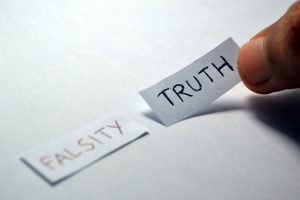
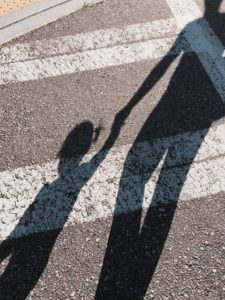
 SLOW DOWN THE CONVERSATION! As I mentioned, ‘drama’ is fast and mindless. So slow down the conversation. Put in breaks such as a 24-delay in responding to emails or simply say in a conversation, ‘I will need 24 hours to think about what you just said and get back to you.’ Or, ‘let me go outside and put my feet on the ground and get centred, so I can show up here feeling good about how I am doing that.’
SLOW DOWN THE CONVERSATION! As I mentioned, ‘drama’ is fast and mindless. So slow down the conversation. Put in breaks such as a 24-delay in responding to emails or simply say in a conversation, ‘I will need 24 hours to think about what you just said and get back to you.’ Or, ‘let me go outside and put my feet on the ground and get centred, so I can show up here feeling good about how I am doing that.’ Identify what you really need and value. Clarify what you really want to have happen and what the relationship really means to you. Perhaps you need to exit the relationship because it is draining your energy. Perhaps you each need to clarify what values and core needs are being disrespected so it becomes clear what you need or want to have happen instead of the ‘drama’. Don’t shortchange this step. Take the time to deeply listen to what you need and then the other person. When people come back to the same issue again and again, even ‘after it’s been discussed’, it signifies that a core need or value is still not validated, and people are still not feeling listened to. David Ausberger says that deep listening is really an experience of true love. Establish boundaries that reflect your core values and true needs so that your relationships have improved patterns of connection than ‘drama’.
Identify what you really need and value. Clarify what you really want to have happen and what the relationship really means to you. Perhaps you need to exit the relationship because it is draining your energy. Perhaps you each need to clarify what values and core needs are being disrespected so it becomes clear what you need or want to have happen instead of the ‘drama’. Don’t shortchange this step. Take the time to deeply listen to what you need and then the other person. When people come back to the same issue again and again, even ‘after it’s been discussed’, it signifies that a core need or value is still not validated, and people are still not feeling listened to. David Ausberger says that deep listening is really an experience of true love. Establish boundaries that reflect your core values and true needs so that your relationships have improved patterns of connection than ‘drama’. In this core belief, we enter the land of dependency and exclude ourselves from the blessings of life, of love and life-giving relationships. Our sense of shame and unworthiness causes us to ‘do for others’ what we cannot do for ourselves. We will not be able to open to love, nor the blessing of another. If we do not perceive ourselves as being worthy of someone’s blessing, we will not be able to stand and look someone in the eye and tell them what we need. Here, there is a lack of self-respect, a lack of boundaries and whole bunch of people-pleasing. In this land of dependency, we will find ourselves envious, resentful, exhausted and covet what we perceive others have or we give to them because we cannot give it to ourselves nor receive it from another. We lack kindness towards ourselves, remain disconnected with others and often fall into a state of passivity (-aggressiveness) about our lives.
In this core belief, we enter the land of dependency and exclude ourselves from the blessings of life, of love and life-giving relationships. Our sense of shame and unworthiness causes us to ‘do for others’ what we cannot do for ourselves. We will not be able to open to love, nor the blessing of another. If we do not perceive ourselves as being worthy of someone’s blessing, we will not be able to stand and look someone in the eye and tell them what we need. Here, there is a lack of self-respect, a lack of boundaries and whole bunch of people-pleasing. In this land of dependency, we will find ourselves envious, resentful, exhausted and covet what we perceive others have or we give to them because we cannot give it to ourselves nor receive it from another. We lack kindness towards ourselves, remain disconnected with others and often fall into a state of passivity (-aggressiveness) about our lives. In this core belief, we find ourselves in the land of arrogance and pride. Our acts of ‘charity’ are really ‘blessings’ imposed … and for the receiver, not really a blessing at all. In this state of arrogance or superiority, our helping another is often wrought with the assumption ‘I know better.’ Cultures and peoples have been destroyed in the blind assumption that “our way is better than your way.” Culturally, reflect upon the disastrous results of the way First Nations peoples and tribes have been mistreated, abused and fundamentally disregarded. Connection, community and the life-giving spiritual knowing of our country and our Earth have been destroyed in this genocide. It’s often hard to fathom the depth of our failures toward First Nations people because of all we imposed. We failed to create boundaries of mutual respect and kindness, of common dignity for all people. The repercussions for these lack of boundaries and compassionate connection will be our burden for decades to come. What we did in this cultural example, we also do to ourselves personally and to others when we come with an attitude of I know how to ‘fix’ you.
In this core belief, we find ourselves in the land of arrogance and pride. Our acts of ‘charity’ are really ‘blessings’ imposed … and for the receiver, not really a blessing at all. In this state of arrogance or superiority, our helping another is often wrought with the assumption ‘I know better.’ Cultures and peoples have been destroyed in the blind assumption that “our way is better than your way.” Culturally, reflect upon the disastrous results of the way First Nations peoples and tribes have been mistreated, abused and fundamentally disregarded. Connection, community and the life-giving spiritual knowing of our country and our Earth have been destroyed in this genocide. It’s often hard to fathom the depth of our failures toward First Nations people because of all we imposed. We failed to create boundaries of mutual respect and kindness, of common dignity for all people. The repercussions for these lack of boundaries and compassionate connection will be our burden for decades to come. What we did in this cultural example, we also do to ourselves personally and to others when we come with an attitude of I know how to ‘fix’ you. In this core operating belief, we find ourselves in the land of curses. Though we may find ourselves in a state of ‘likeness’ with each other, a state of common experience about what is ‘not okay’ around us or in our environment, our ‘joining together’ in this state is destructive, cynical and riddled with mutual contempt and despair. Though we both may be ‘down in the dumps’, we injure each other to prevent ourselves from being more miserable than the other. All heart connection is lost, annihilated or in perpetual threat. Again, we have no healthy boundaries here. Rather, we put energy into creating emotional walls and barriers, leaving us locked away from connection and in the stalemate of our own ‘inner hauntings.’
In this core operating belief, we find ourselves in the land of curses. Though we may find ourselves in a state of ‘likeness’ with each other, a state of common experience about what is ‘not okay’ around us or in our environment, our ‘joining together’ in this state is destructive, cynical and riddled with mutual contempt and despair. Though we both may be ‘down in the dumps’, we injure each other to prevent ourselves from being more miserable than the other. All heart connection is lost, annihilated or in perpetual threat. Again, we have no healthy boundaries here. Rather, we put energy into creating emotional walls and barriers, leaving us locked away from connection and in the stalemate of our own ‘inner hauntings.’ Finally, this operating core belief sustains us in the land of blessing. This is the place of joining, of collaboration, of mutuality, equality, respect and appreciation. In this land, we can pray and chant the ‘Namaste’, the light in you is the light in me; the peace in you is the peace in me. In this land, we can care for each other in dignity and respect for each other. It is not that we are needy of each other, rather, in appreciation for what another values and for what we value, we respect and validate and support the unique worth of ourselves and the other. In the land of blessing, we seek to compassionately appreciate and ‘see’ the good in all things. Our boundaries here are flexible, clear, growing, strong, consistent and kind, sustaining the vitality of our own core essence. Because we respect and appreciate the goodness in ourselves and the other, our connections are real, open, compassionate and can be trusted.
Finally, this operating core belief sustains us in the land of blessing. This is the place of joining, of collaboration, of mutuality, equality, respect and appreciation. In this land, we can pray and chant the ‘Namaste’, the light in you is the light in me; the peace in you is the peace in me. In this land, we can care for each other in dignity and respect for each other. It is not that we are needy of each other, rather, in appreciation for what another values and for what we value, we respect and validate and support the unique worth of ourselves and the other. In the land of blessing, we seek to compassionately appreciate and ‘see’ the good in all things. Our boundaries here are flexible, clear, growing, strong, consistent and kind, sustaining the vitality of our own core essence. Because we respect and appreciate the goodness in ourselves and the other, our connections are real, open, compassionate and can be trusted. If you are ready and eager to learn the HOW of creating your personal, unique boundaries that fuel your body-mind-spirit connection, happiness and joy, don’t miss my upcoming two-day workshop on June 1–2, 2018.
If you are ready and eager to learn the HOW of creating your personal, unique boundaries that fuel your body-mind-spirit connection, happiness and joy, don’t miss my upcoming two-day workshop on June 1–2, 2018. 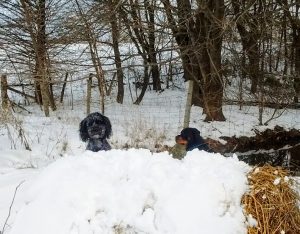 It was quite cold for the past couple of weeks, with enough snow to use my snowshoes. I love this weather as does Carlie. She has certain ‘snow games’ she loves to play which include digging for her green ball and jumping to catch the snow I kick. Lucy has aptly named this game ‘kick snow’. Carlie’s life purpose is about living our joy. It’s not a goal she has – it’s an innate attunement to a way of being in her world. It’s part of her expressed consciousness and intentionality!
It was quite cold for the past couple of weeks, with enough snow to use my snowshoes. I love this weather as does Carlie. She has certain ‘snow games’ she loves to play which include digging for her green ball and jumping to catch the snow I kick. Lucy has aptly named this game ‘kick snow’. Carlie’s life purpose is about living our joy. It’s not a goal she has – it’s an innate attunement to a way of being in her world. It’s part of her expressed consciousness and intentionality! The ‘spirit of joy’ of this New Year can be a blessing of hope, of aspirations and of new intentions for changing toward our preferred future and who we hope to be. To take full advantage of this ‘celebrative spirit’ which currently inspires us, we need to co-create with and absorb this ‘spirit of joy’ into our New Year’s hopes and wishes for a finer year.
The ‘spirit of joy’ of this New Year can be a blessing of hope, of aspirations and of new intentions for changing toward our preferred future and who we hope to be. To take full advantage of this ‘celebrative spirit’ which currently inspires us, we need to co-create with and absorb this ‘spirit of joy’ into our New Year’s hopes and wishes for a finer year.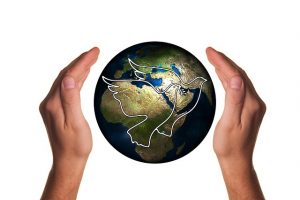 What I have learned over the years is that for me, truly inspiring intentions toward my vision of a more peaceful world, where all beings are healthy, happy, prosperous and at peace (thus justice and kindness are core values of our common humanity and determine our relationships with all of life) are the catalyzers for my change. Whether it’s through a spiritual word which focuses and empowers me, or a soul expressed intention which expands and informs my actions, these simple and yet powerful words carry me gently, cleanly and synchronistically beyond my familiarities toward the reality of my vision well lived.
What I have learned over the years is that for me, truly inspiring intentions toward my vision of a more peaceful world, where all beings are healthy, happy, prosperous and at peace (thus justice and kindness are core values of our common humanity and determine our relationships with all of life) are the catalyzers for my change. Whether it’s through a spiritual word which focuses and empowers me, or a soul expressed intention which expands and informs my actions, these simple and yet powerful words carry me gently, cleanly and synchronistically beyond my familiarities toward the reality of my vision well lived.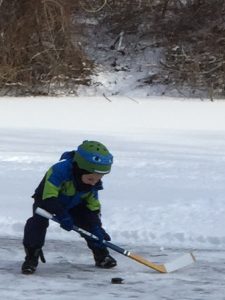 Happy New Year to all young and old and those in between. To those who stand tall and to those who crawl on the ground. To those who fly and to those who swim. To those who sing and to those who howl. To those who bloom and bear fruit and to those who mushroom and grow in groves. To those who trickle and wind, and to those who ebb and flow. To those who shine and radiate and to those who cause darkness through cycles, I wish you a year of joyous happiness, healing hearts and bodies, and the essence of abundance that is sufficient, generous and sustainable for all. Blessed be.
Happy New Year to all young and old and those in between. To those who stand tall and to those who crawl on the ground. To those who fly and to those who swim. To those who sing and to those who howl. To those who bloom and bear fruit and to those who mushroom and grow in groves. To those who trickle and wind, and to those who ebb and flow. To those who shine and radiate and to those who cause darkness through cycles, I wish you a year of joyous happiness, healing hearts and bodies, and the essence of abundance that is sufficient, generous and sustainable for all. Blessed be.